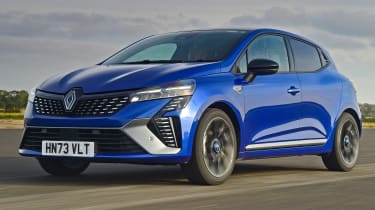
When purchasing a new car, two of the most critical factors to consider are safety and reliability. These elements ensure not only the protection of passengers but also the longevity and dependability of the vehicle. This article delves into the importance of these aspects, the criteria used to assess them, and provides a detailed analysis of the best new car ratings for 2024.
Overview of the Importance of Safety and Reliability in New Cars
Safety and reliability are paramount in the automotive world. Safety encompasses the vehicle’s ability to protect its occupants in the event of an accident, as well as its capability to avoid accidents through advanced technologies. Reliability, on the other hand, pertains to the vehicle’s consistency in performance and minimal need for repairs over time. Together, they form the backbone of consumer confidence and satisfaction, influencing purchasing decisions and brand loyalty.
The Criteria for Assessing Safety and Reliability
To evaluate a car’s safety and reliability, various criteria and tests are employed by expert organizations. These criteria include crash test ratings, the presence of safety features and technologies, long-term performance metrics, owner satisfaction, and maintenance costs. Each criterion provides a comprehensive view of the vehicle’s overall performance in real-world conditions.
Understanding Safety Ratings
Crash Test Ratings
Crash test ratings are a fundamental part of vehicle safety assessment. Organizations like the National Highway Traffic Safety Administration (NHTSA) and the Insurance Institute for Highway Safety (IIHS) conduct rigorous crash tests to determine how well a vehicle protects its occupants in different collision scenarios. These tests simulate head-on collisions, side impacts, and rollovers to provide a clear picture of a car’s structural integrity and safety features.
Safety Features and Technologies
Modern vehicles are equipped with a plethora of safety features designed to prevent accidents and protect passengers. These include airbags, anti-lock braking systems (ABS), electronic stability control (ESC), and more. Advanced technologies such as blind-spot monitoring, lane departure warning, and automatic emergency braking (AEB) further enhance a vehicle’s safety profile, reducing the likelihood of accidents.
Advanced Driver Assistance Systems (ADAS)
ADAS represents the pinnacle of automotive safety innovation. Systems like adaptive cruise control, traffic sign recognition, and automatic parking assist help drivers navigate safely and reduce human error. These systems use sensors, cameras, and radar to monitor the vehicle’s surroundings and assist in making safer driving decisions.

Understanding Reliability Ratings
Long-Term Performance Metrics
Reliability ratings are determined by analyzing a vehicle’s long-term performance. This includes evaluating the frequency and severity of repairs, as well as the car’s ability to maintain optimal performance over several years. Vehicles with high reliability ratings typically have fewer breakdowns and lower repair costs.
Owner Satisfaction and Feedback
Owner satisfaction is a crucial component of reliability assessments. Surveys and feedback from car owners provide invaluable insights into real-world performance and common issues. High satisfaction ratings often correlate with fewer mechanical problems and a better overall driving experience.
Maintenance and Repair Costs
The cost of maintaining and repairing a vehicle is a significant factor in its reliability rating. Cars that require frequent, expensive repairs are deemed less reliable. Conversely, vehicles with lower maintenance costs and fewer issues are considered highly reliable.
Top Organizations Providing Safety and Reliability Ratings
National Highway Traffic Safety Administration (NHTSA)
NHTSA is a leading authority in vehicle safety, conducting rigorous crash tests and providing detailed safety ratings. Its five-star rating system helps consumers make informed decisions about vehicle safety.
Insurance Institute for Highway Safety (IIHS)
IIHS is renowned for its comprehensive crash tests and safety evaluations. It assesses vehicles in various crash scenarios and rates them based on their performance, contributing significantly to safety ratings.
Consumer Reports
Consumer Reports is a trusted source for unbiased vehicle reviews and ratings. It combines test results, owner satisfaction surveys, and reliability data to provide comprehensive car ratings.
J.D. Power
J.D. Power conducts extensive surveys and studies to evaluate vehicle reliability and customer satisfaction. Its ratings are based on detailed feedback from car owners, offering a clear picture of a vehicle’s long-term performance.

2024’s Top-Rated Cars for Safety
Overview of Leading Models
The 2024 model year features several vehicles that stand out for their exceptional safety ratings. These models have undergone rigorous testing and have been equipped with advanced safety features.
Detailed Analysis of Safety Features
Leading models for 2024 boast an array of safety technologies, including enhanced airbags, advanced driver assistance systems, and robust structural designs. Features such as automatic emergency braking, lane-keeping assist, and adaptive headlights are common in these top-rated vehicles.
Case Studies: How Safety Ratings Were Earned
Examining specific models, such as the Volvo XC90 and the Subaru Outback, reveals how these vehicles achieved high safety ratings. These case studies highlight the integration of cutting-edge safety technologies and superior crash test performance.
2024’s Top-Rated Cars for Reliability
Overview of Leading Models
In terms of reliability, the 2024 Toyota Corolla and Lexus GX stand out. These models are known for their durable construction, minimal maintenance issues, and high owner satisfaction.
Detailed Analysis of Reliability Performance
The Toyota Corolla, for instance, is celebrated for its fuel efficiency, robust engine, and minimal mechanical problems. The Lexus GX, with its luxury features and dependable performance, exemplifies long-term reliability.
Case Studies: How Reliability Ratings Were Achieved
Exploring the maintenance records and owner feedback for these models provides insight into their high reliability ratings. These vehicles demonstrate consistent performance and low incidence of repairs.
Best Compact Cars for Safety and Reliability

Key Features and Highlights
Compact cars like the Honda Civic and Mazda3 offer a blend of safety and reliability. They come equipped with advanced safety features and are known for their economical maintenance.
Standout Models and Their Ratings
The Honda Civic’s high crash test scores and reliable performance make it a top choice. Similarly, the Mazda3’s safety technologies and owner satisfaction ratings highlight its excellence.
Best Midsize Cars for Safety and Reliability
Key Features and Highlights
Midsize cars, including the Toyota Camry and Honda Accord, provide robust safety features and reliable performance. These models are designed to offer comfort without compromising on safety.
Standout Models and Their Ratings
The Toyota Camry’s adaptive safety features and consistent reliability ratings make it a standout. The Honda Accord is also noted for its advanced driver assistance systems and long-term dependability.
Best SUVs for Safety and Reliability
Key Features and Highlights
SUVs like the Subaru Forester and Hyundai Palisade excel in safety and reliability. They offer spacious interiors, advanced safety technologies, and are built to endure various driving conditions.
Standout Models and Their Ratings
The Subaru Forester’s EyeSight safety system and durable build are highly rated. The Hyundai Palisade’s comprehensive safety suite and reliability record also place it among the top.
Best Trucks for Safety and Reliability
Key Features and Highlights
Trucks such as the Ford F-150 and Toyota Tacoma combine rugged performance with safety and reliability. These models are equipped with features to handle heavy-duty tasks while ensuring passenger safety.
Standout Models and Their Ratings
The Ford F-150’s advanced safety technologies and reliability make it a leader in its class. The Toyota Tacoma is also praised for its robust construction and dependable performance.
Innovative Safety Technologies in New Cars
Latest Advancements in Safety Tech
Innovations like autonomous driving capabilities, enhanced sensor systems, and integrated safety networks represent the latest advancements in automotive safety. These technologies aim to reduce accidents and improve overall road safety.
Real-World Applications and Benefits
The real-world applications of these technologies include features like traffic jam assist, predictive emergency braking, and vehicle-to-vehicle communication, which collectively enhance driving safety and convenience.
Trends in Car Reliability for 2024
Emerging Patterns in Reliability Data
Reliability data for 2024 indicates a trend towards improved durability and fewer mechanical issues across various models. Advances in engineering and materials have contributed to these enhancements.
Impact of Technological Advances on Reliability
Technological advances, such as better powertrain designs and more efficient manufacturing processes, have significantly boosted vehicle reliability. These innovations ensure that modern cars are more dependable than ever.
The Role of Manufacturer Warranties in Reliability
Understanding Warranty Coverage
Manufacturer warranties play a crucial role in vehicle reliability. They offer peace of mind by covering repair costs and protecting against unexpected mechanical failures.
How Warranties Influence Reliability Perceptions
Warranties influence consumer perceptions by assuring them of the vehicle’s quality and the manufacturer’s confidence in their product. Comprehensive warranties often correlate with higher reliability ratings.
Comparing Safety and Reliability Across Car Brands
Brand-Specific Strengths and Weaknesses
Different car brands have distinct strengths and weaknesses regarding safety and reliability. Brands like Volvo are renowned for safety, while Toyota is celebrated for reliability.
Detailed Comparisons and Insights
A detailed comparison of brands reveals that while some excel in safety technologies, others focus on building durable and reliable engines. This balance helps consumers choose based on their priorities.
Consumer Tips for Evaluating Safety and Reliability
What to Look for in Safety Features
Consumers should look for features such as adaptive cruise control, lane departure warning, and automatic emergency braking when evaluating safety. These technologies significantly enhance driving safety.
How to Assess Long-Term Reliability
To assess long-term reliability, consumers should consider factors such as historical performance data, owner reviews, and manufacturer reputation. Reliable vehicles typically have fewer reported issues and lower maintenance costs.
How Safety and Reliability Affect Resale Value
Understanding the Link Between Ratings and Resale
Safety and reliability ratings directly impact a vehicle’s resale value. Cars with high ratings are often more desirable in the used car market, leading to better resale prices.
Maximizing Resale Value Through Smart Choices
By choosing vehicles with strong safety and reliability records, consumers can maximize their investment and ensure better resale value in the future. Regular maintenance and proper care also contribute to retaining value.
Case Study: A Comprehensive Review of a Top-Rated Model

In-Depth Look at Safety and Reliability
A detailed review of the 2024 Subaru Outback reveals its superior safety features, including advanced driver assistance systems and robust crash test performance. Its reliability is underscored by minimal repair needs and high owner satisfaction.
Owner Experiences and Expert Opinions
Owner experiences highlight the Subaru Outback’s dependable performance in various driving conditions. Expert opinions further validate its top-rated status, emphasizing its balance of safety and reliability.
Future Predictions for Safety and Reliability in New Cars
Upcoming Innovations and Expectations
The future of automotive safety and reliability promises even more innovations, such as fully autonomous driving and enhanced vehicle connectivity. These advancements will likely lead to safer and more reliable cars.
How the Industry is Evolving
The automotive industry is evolving towards integrating smarter technologies and more robust engineering practices. These changes aim to enhance both safety and reliability, meeting the increasing demands of consumers.
Conclusion
Recap of Key Points
Safety and reliability are crucial factors in the automotive industry. Understanding the criteria for assessment, knowing the top-rated models, and being aware of emerging trends help consumers make informed decisions.
Final Thoughts on Choosing a Safe and Reliable Car
Choosing a safe and reliable car involves careful consideration of ratings, features, and brand reputation. By prioritizing these aspects, consumers can ensure a secure and dependable driving experience.
Additional Resources and References
For further information, consult resources such as NHTSA, IIHS, Consumer Reports, and J.D. Power. These organizations provide detailed insights and comprehensive ratings to aid in the car buying process.


 Exploring the Top Picks: Unveiling the Best Car Models
Exploring the Top Picks: Unveiling the Best Car Models  Unveiling Excellence: The World of In-Depth Car Reviews
Unveiling Excellence: The World of In-Depth Car Reviews  Inside the Dynamic Car Industry
Inside the Dynamic Car Industry  Unveiling Current Auto Trends
Unveiling Current Auto Trends  Exploring the Latest Motor Trend Updates
Exploring the Latest Motor Trend Updates  Can Oscar Meyer’s renamed ‘Frankmobile’ cut the mustard?
Can Oscar Meyer’s renamed ‘Frankmobile’ cut the mustard?  Smart budgeting strategies for tradespeople
Smart budgeting strategies for tradespeople  Exploring New Car Ratings: A Comprehensive Insight into Automotive Excellence
Exploring New Car Ratings: A Comprehensive Insight into Automotive Excellence  Vintage Ring Settings Loved by London Couples
Vintage Ring Settings Loved by London Couples